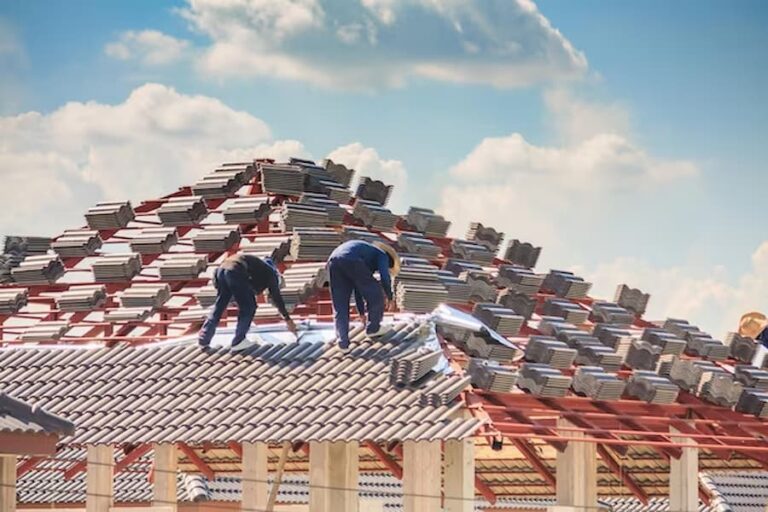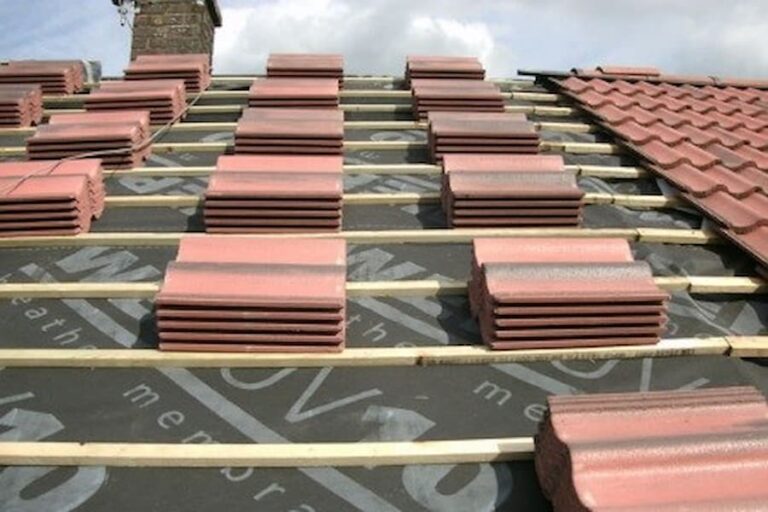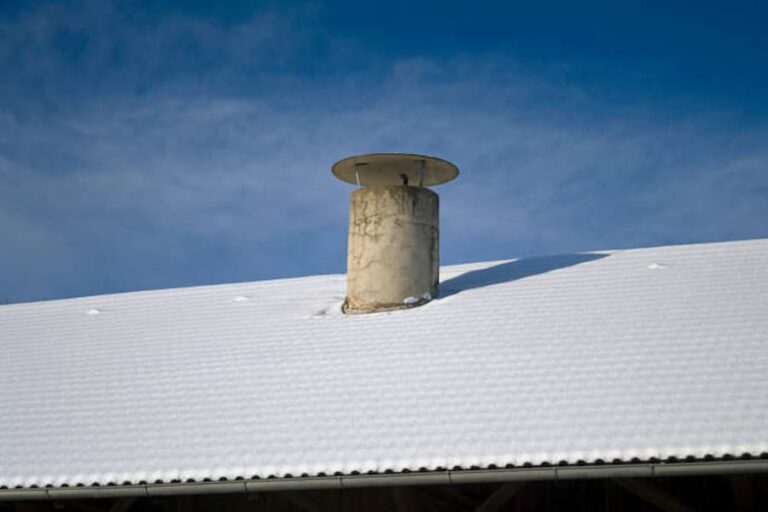How Many Hail Hits to Replace Roof?
The life of a roof can be significantly impacted by hail damage. Hail is made of ice and can be as small as a pea or as big as a baseball, depending on the size and severity of the storm. When hail impacts a roof, it can cause serious damage to the shingles, tiles, and underlying wood structure. As a roofing expert, it is important to be able to determine how many hail hits it takes to replace a roof.
Hail of any size can be destructive. Small hailstones can cause dimples in the roof, while larger stones can cause punctures, tearing, and cracking of the shingles. If a roof is exposed to hail on a regular basis, it will need to be replaced much sooner than a roof that has not been exposed.
Types of Material
When it comes to roofing materials, slate tiles are one of the oldest and most durable materials around. Hail damage can cause significant damage to the roof, leading to broken shingles, collapsed gutters, and dented gutters. Cody Stammers, a professional roofer, can help you assess the amount of hail damage and the possibility of missing granules or granular loss.
The key benefits of slate tiles are their durability and longevity – they can last up to nearly a hundred years and have excellent elevation damage hail damage protection. Asphalt shingles offer better protection, but they are not as long-lasting.
Types of Roofing Materials
When it comes to roofing materials, there are a variety of options available. From asphalt shingles to slate tiles, homeowners are presented with a range of possibilities. Although hail damage can be a major factor when considering which type of material to use, other factors such as energy efficiency and cost should also be taken into account.
Asphalt shingles are one of the most popular roofing materials due to their cost-effectiveness and ease of installation. They are made up of asphalt granules, which are highly resistant to hail damage and provide excellent protection from the elements. However, if hail damage does occur, asphalt shingles are not as resilient as other materials and will need to be replaced.
Pros and Cons of Different Roofing Materials
When it comes to the pros and cons of different roofing materials, it is important to consider the type of material, its durability, and its impact-resistance. Asphalt shingles are an economical option, but they may not be as durable as other materials and can suffer from hail damage and granule loss.
Slate tiles are known for their long-life and durability, and they are also considered to be one of the best-class impact-resistant shingles. However, they can be more expensive than other materials, and may not be the best way to go for those on a budget.
Slate Tiles
Slate tiles offer a unique, classic look and a level of durability that other roofing materials cannot match. Moreover, slate tiles are made from natural stone, giving them the strength to withstand hail damage and other extreme weather conditions with minimal damage.
The natural stone is also fireproof, giving an added layer of protection to the roof. With proper maintenance and installation, slate tiles can last for decades, with some roofs lasting as long as a century. With proper installation, slate tiles provide excellent protection against hail damage, dented gutters, and missing shingles.
Furthermore, slate tiles are energy efficient, helping to keep the home cool in the hot summer months and warm in the cold winter months. They can also help to reduce the amount of hail damage and repair costs associated with hail damage.
Severity of Damage
Assessing the severity of damage requires careful inspection for hail spatter and other telltale signs. Roofing experts can uncover missing shingles, dented gutters, and granule loss to determine how much hail damage has impacted the home.
Homeowners should also consider preventive measures such as best class impact-resistant shingles to protect against future hail damage.
The cost of repair or replacement depends on the extent of the damage and the materials and energy efficiency of the replacement.
Assessing the Extent of the Damage
Taking a closer look at the severity of damage caused by hail is a necessary step in determining the best course of action for repair or replacement. Visually inspecting the roof and examining its materials can often reveal the extent of the damage.
Hail damage can range in size and shape, anywhere from the size of a penny to that of a golf ball. It can also cause disruption to the roof’s structure including missing shingles, dented gutters, collapsed gutters, and granular loss.
Hail damage is often visible from the ground, however, it is important to get a professional roofer on the roof for a more thorough inspection and to assess the degree of damage.
Cost of Repair/replacement
Having assessed the extent of the damage from hail, it is time to consider the cost of repair or replacement. Depending on the type and severity of the damage, a roofing professional can determine the best course of action.
Hail damage may be minimal, such as missing shingles or granule loss, or it may be significant, with major dents and missing granules. For minor damage, a roofer may be able to repair the existing roof, while for more extensive damage, a new roof is likely the best option.
In some cases, the best class of impact-resistant shingles may be the best way to ensure your roof can withstand future hail storms.
Insurance Coverage
When assessing the severity of the damage, homeowners should also consider the insurance coverage they have in place. Many insurance policies cover hail damage to roofs, although the extent of coverage will vary depending on the policy. A cost value policy will cover the home’s resale value, while an actual cash value policy will cover the costs of repairs or replacements minus depreciation.
If a homeowner suspects hail damage, they should contact their insurance provider for information on submitting a hail damage insurance claim. A hail damage inspection may be necessary in order to receive insurance coverage.
With the help of a roofing expert, a homeowner can determine the extent of the hail damage and identify any missing shingles, granule loss, and other telltale signs of hail damage.
Size of Hailstones
Roofs of all ages and conditions can be vulnerable to hail damage, but the size of the hailstone and the severity of the damage is often determined by its size. Smaller hailstones are more damaging than larger ones, and can result in dents, missing shingles, granule loss, and even ceiling damage.
Hail damage can be difficult to determine, but Cody Stammers Pro Services can help. We provide hail damage inspections to assess the impact of hail and the best class impact-resistant shingles. We can also help with insurance claims and replacement of missing shingles.
Size Matters – Smaller Hail Is More Damaging
Size matters—smaller hailstones are considered more damaging than large hailstones. Smaller hailstones can penetrate asphalt shingles more easily, leading to the potential for larger hail damage impact. For instance, hailstone sizes of one inch or smaller can cause more damage and missing granules or shingles than larger hailstone sizes of two inches or more.

Insurance policies typically cover hail damage and the severity of damage depends on the age and condition of the roof, the policy type, and the size of the hail. A best-in-class impact-resistant shingles roof may protect the home from hail damage up to nearly one-mile in diameter.
Age and Condition of Roof
The age and condition of a roof can also determine the severity of hail damage. Older roofs are more prone to hail damage due to the wear and tear of asphalt shingles over time.
Additionally, if the roof is not in the best condition, the hail may be more damaging. If the roof is already missing shingles or has been badly damaged in other ways, then hail may add to the destruction.
Some home and business owners opt to replace their roof with a nailover reroof or to install the best class impact-resistant shingles to prevent any further hail damage. When there is hail damage, insurance companies may be contacted for hail damage insurance claims.
Severity of Hail Damage
The severity of hail damage can vary greatly, depending on a number of factors. The size of the hailstones is one of the most important, as smaller hailstones are more likely to cause more damage.
In general, hail stones smaller than a quarter inch in diameter can cause significant damage to roofing materials, particularly asphalt shingles. On the other hand, stones larger than two inches in diameter are less likely to cause damage, as they will usually break up as they fall due to the air resistance.
It is also important to consider the age and condition of the roof. Asphalt roofs that are older and in poor condition are much more susceptible to hail damage.
Impact Angle
The impact angle of a hailstorm can have a huge effect on the amount of hail damage inflicted on a roof. Wind direction and roof material are also important factors to consider.
A roof with asphalt shingles provides the best class of impact-resistant shingles, while other roof materials may not be able to withstand the force of large hailstones. In addition, the quantity of hail can vary greatly; hailstones of the same size can travel nearly miles from the origin of the storm.
When considering insurance coverage, it’s important to understand that an actual cash value policy is different from a replacement cost policy.
Angles of Impact and Direction of Wind
As roofers, it’s our job to protect our customers from hail damage. We must ensure that the angles of impact and the direction of the wind are taken into consideration when assessing hail damage. Roof materials can make a big difference in the amount of hail damage sustained.
For instance, if a roof has asphalt shingles, the best class of impact-resistant shingles should be used to minimize hail damage. If a customer has an insurance policy, it’s also important to ensure that the coverage is sufficient to cover hail damage.
This includes considering the cost of resale value and the home’s value when filing a claim. If in doubt, many estimates can be found online about the hail spatter that can be expected for a particular roof.
Roof Material
The impact angle and direction of wind are important factors in determining how much hail damage a roof can take. However, the type of roofing material installed on a home also plays a major role in protecting it from severe hail storms. Asphalt shingles are the most common form of roofing material and provide a good level of protection against hail.
For those looking for the best class of impact-resistant shingles, a good place to start is looking into Class 4 shingles. These shingles are rated to withstand more intense hail storms and are often required in some insurance policies to qualify for coverage. For those hoping to get the most out of their home’s value, Class 4 shingles are worth considering.
Hailstone Quantity
When it comes to the amount of hailstone damage a roof can sustain, the number of stones and their size are key factors. For example, if a roof is hit by several large hail stones, the impact is more likely to cause damage than if it had been hit by many smaller stones.
This is because large stones are more likely to cause greater damage due to their size and velocity. Additionally, the angle of impact and the direction of wind can also influence the amount of damage done to a roof.
Different materials can also play a role in the amount of hailstone damage caused. Asphalt shingles, for example, are a common roofing material and can handle most hailstone impacts.
Weather Conditions
Rain and snow can have a serious impact on damage, wind speed and precipitation. Hail is a particularly damaging form of precipitation and can cause significant damage in a relatively short amount of time. So weather conditions always matter in roof lifespan.
Asphalt shingles are the most popular choice in roofing materials but the best class of impact-resistant shingles can provide much needed protection against hail damage.
An insurance policy can cover the cost of hail damage, but it is important to understand exactly what kind of coverage is included in the policy. It is also important to know about hail spatter and other possible hail damage indicators.
Impact of Rain and Snow on Damage
As the angle of impact of hail stones is important for the damage inflicted, so too are the weather conditions in which they fall.

Heavy rains or snow can increase the amount of damage that occurs, as they can soften asphalt shingles and make them more susceptible to hail impacts. Hail can cause spatter damage when it strikes a roof, which is a type of damage that tends to be much more severe than the typical hail damage.
To protect against this type of damage, homeowners should consider investing in the best class of impact-resistant shingles, which can help their roof withstand hail storms much better than traditional asphalt shingles. Even if a roof has the best protection, homeowners should still check with their insurance policy to see what kind of coverage they have regarding hail damage.
Wind Speed
The impact angle alone is not enough to determine the full extent of damage that hail can cause. Wind speed is another essential factor to consider when assessing hail damage. Wind gusts can cause hail to spatter across a roof, leading to extensive damage even if the impact angle is not severe.
Asphalt shingles can sustain much hail damage, but best-in-class impact-resistant shingles provide the most protection. Homeowners should also consider their insurance policy and coverage when assessing hail damage.
Insurance often covers hail damage if it is extensive enough, so it is important to understand the coverage limits and conditions in your policy. It is also helpful to know about hail spatter and its effects on roofing materials.
Precipitation
The impact angle of hail on your roof contributes to the amount of damage done, but it is not the only factor. Weather conditions like rain and snow can also cause their own damage.
In terms of precipitation, hail can be especially destructive, pounding down on your roof and causing much more damage than regular rain. Hail can cause dents in metal roofs, cracks in tiles, and strip away asphalt shingles.
Homeowners should invest in the best-class impact-resistant shingles to protect their roof from hail and other forms of weathering. It may also be a good idea to look into your insurance policy to see what coverage you have against hail damage.
Conclusion
When it comes to determining how many hail hits it takes to replace a roof, there are a variety of factors that must be taken into consideration. These include the type of material used, the severity of the damage, the size of the hailstones, the angle of impact, and the weather conditions.
It is essential that a roofing expert assess the damage in order to provide an accurate assessment of the extent of the damage and to advise on the best course of action. In certain cases, replacing the roof may be the only solution, while in other cases repairs may be able to offer a suitable solution.
Ultimately, an expert opinion is the best way to assess the true extent of the damage and decide on the best course of action.







